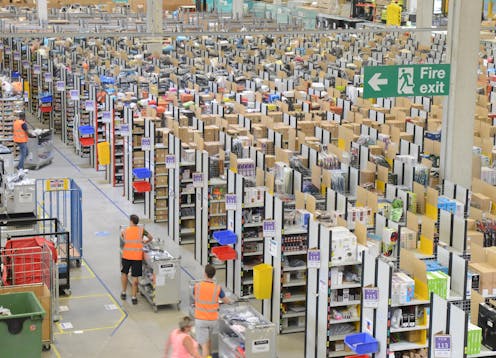Amazon still seems hell bent on turning workers into robots – here's a better way forward
- Written by David Spencer, Professor of Economics and Political Economy, University of Leeds

The strikes[1] by hundreds of Amazon workers[2] at the company’s Coventry warehouse in the English Midlands have brought into relief some of the problems of work in today’s high-tech society.
While primarily focused on pay, the workers are pushing back[3] against long hours and an automated surveillance system that times how long they take to do each task, as well as going to the toilet. It all contributes to a high pressure and intensive work environment – plus more accidents[4].
We have much to learn from this painful situation about the future of work and technology. On the one hand, Amazon’s whole employment model goes against the general assumption[5] that technology destroys jobs. Equally, however, the company’s employment practices show how automation can make workplaces oppressive, forcing workers to become more like robots.
Pessimistic predictions about the threat to jobs from technology are nothing new. One frequently cited study[6] published in 2013 predicted that up to 47% of jobs in the US would be removed by automation over a 20-year period. Now that we’re halfway through that period, jobs in the US[7] remain plentiful and unemployment is low. Similarly, there’s evidence from Germany[8] that the use of robots has had no effect on total employment.
Across the G7 as a whole, employment has been holding up well. Aside from a COVID blip, unemployment has generally been falling for the past decade in spite of automation and robotics gradually becoming more important to workplaces. The reality is that paid employment has been surviving bouts of technological progress for centuries.
G7 unemployment rates 2005-21







